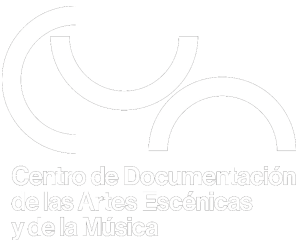Notation as a transformative technology: (Registro nro. 129780)
[ vista simple ]
| 000 -LEADER | |
|---|---|
| fixed length control field | 02021nab a2200217 c 4500 |
| 001 - CONTROL NUMBER | |
| control field | myd_95133 |
| 003 - CONTROL NUMBER IDENTIFIER | |
| control field | ES-MaCDM |
| 005 - DATE AND TIME OF LATEST TRANSACTION | |
| control field | 20240917124659.0 |
| 008 - FIXED-LENGTH DATA ELEMENTS--GENERAL INFORMATION | |
| fixed length control field | 181003s2019 enk||||fr 00| u|eng u |
| 040 ## - CATALOGING SOURCE | |
| Original cataloging agency | ES-MaCDM |
| 100 1# - MAIN ENTRY--PERSONAL NAME | |
| Personal name | Bowring, Lynette |
| 9 (RLIN) | 141371 |
| 245 1# - TITLE STATEMENT | |
| Title | Notation as a transformative technology: |
| Remainder of title | orality, literacy and early modern instrumentalists/ |
| Statement of responsibility, etc | Lynette Bowring |
| 260 ## - PUBLICATION, DISTRIBUTION, ETC. (IMPRINT) | |
| Place of publication, distribution, etc | London; Oxford: |
| Name of publisher, distributor, etc | Oxford University Press, |
| Date of publication, distribution, etc | 2019 |
| 300 ## - PHYSICAL DESCRIPTION | |
| Dimensions | páginas |
| 336 ## - TIPO DE CONTENIDO | |
| Término de tipo de contenido | Texto (visual) |
| 337 ## - TIPO DE MEDIO | |
| Término de tipo de contenido | sin mediación |
| 520 ## - SUMMARY, ETC. | |
| Summary, etc | Learning to read and write music can be a transformative experience, opening up new avenues for performance and composition, and inviting the use of different creative processes. For many professional ensemble instrumentalists, particularly those who played wind and bowed-stringef instruments, a transition from traditional oral practices to widespread reading and writing of notation happened only gradually, with some oral practices persisting into the 16th century. By the early Baroque period, some benefits of literacy were being felt by these instrumentalists, since they could write down their music in precise notation and have it published for wider dissemination. In this article the author argues that this growth in musical literacy, and the text-based pedagogical methods of a literate age, had a considerable impact upon the idiomatic instrumental music of the stile moderno. New notations of previously oral traditions produced a more methodical understanding of improvisatory and ornamental idioms, and the creation of compositions using writing encouraged the detailed notation of an idiomatic instrumental style. Drawing on research into orality and literacy in language, the author assesses musical literacy as a tool that shaped the creative acts of instrumentalists and helped them to develop new compositional identities. |
| 773 0# - HOST ITEM ENTRY | |
| Title | Early Music |
| Host Biblionumber | 72886 |
| Record control number | myd_16029 |
| Relationship information | Vol. 47, núm. 2,May. 2019, p. |
| 903 ## - LOCAL DATA ELEMENT C, LDC (RLIN) | |
| a | 95133 |
| b | 95133 |
| 942 ## - ADDED ENTRY ELEMENTS (KOHA) | |
| Koha item type | Artículos de revista |
| Source of classification or shelving scheme | Other/Generic Classification Scheme |
No hay ítems disponibles.

